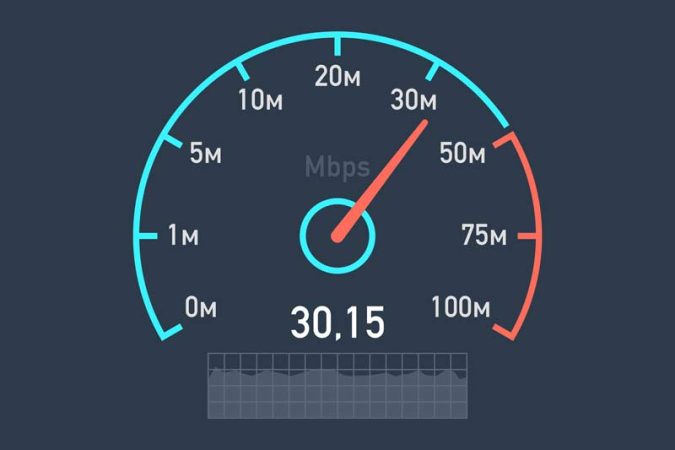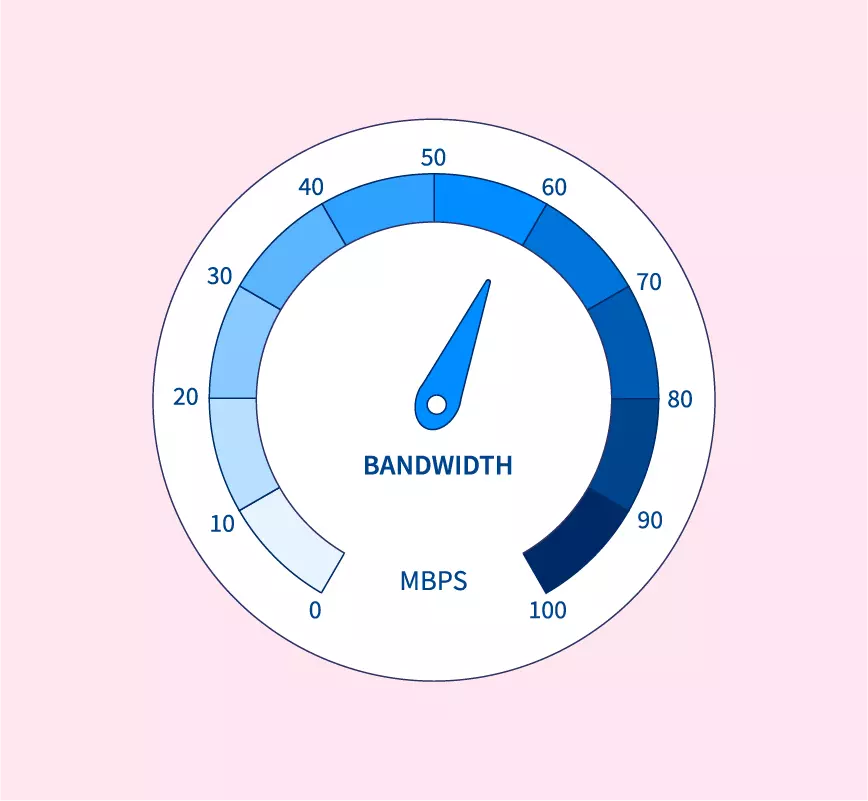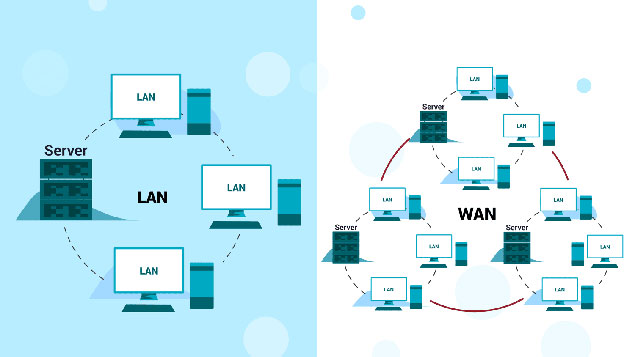The Difference Between Bandwidth and Internet Speed Explained Clearly
In today’s world of the Internet and technology, there is a series of almost complicated terms, such as ping, latency, Internet speed, bandwidth, etc., so if someone encounters these for the first time, they will get confused and struggle to distinguish between them. It should be known that many of these are the same in terms of appearance, but they differ from each other in the inner sense.

What is bandwidth?
This term generally refers to high-volume data transfer, which involves transferring a large amount of data from one place to another with a cable. Broadband Internet connections are made through cable, fiber, and DSL; today, all these connections have become the necessary standards for broadband.
To learn more, compare the bandwidth with the amount of water that can be transferred through a water pipe. The bigger the line, the more water can pass through it in a specific time. Now, this whole thing is like the concept of bandwidth; consider water as data and imagine the pipe as cable, fiber, or DSL.
So, the higher the link or communication pipe capacity, the more data can pass through in one second. This data transfer in bandwidth is measured in megabits per second (Mbps). The more bandwidth you have, the faster data is transferred from one computer to another. Interestingly, when you apply for an Internet service or ISP subscription, the packages you want to buy are priced based on bandwidth.
What is the Internet speed?
Internet speed is measured by the number of bits or bytes that can be transferred in one second. It generally includes two parts: download and upload speed. The download speed measures the data transmitted from the Internet to our device. It determines how fast movies, music, and information are downloaded on our computer and how short videos, web pages, etc., are loaded and displayed when we browse the Internet.
The upload speed also tells us how fast your data is transferred from your computer to the global Internet. Here is the upload speed, which determines how fast it can be to upload images on a website or when we are making a video call. Is our vision clear to the other party? Can’t connect and disconnect? Or how fast the messages we send are sent on different platforms.
What is the difference between internet speed and bandwidth?
Internet speed and bandwidth are related, but are two different criteria for connection quality. Internet speed is the maximum speed at which data can be transferred, usually measured in megabits per second (Mbps).
Bandwidth refers to the maximum amount of data your connection can use at any moment, measured in megabits per second (and gigabits per second for gigabit connections if the bandwidth is high).
To give you a simple example, we should mention the highway and its cars. Here, the bandwidth can be given to the road and the vehicles passing by. The more cars (data) there are, the more traffic there is. This is the case when, for example, you make a video call, your children connect to an internet class, and your wife connects to an internet meeting. It is not clear.
The speed of your connection to the Internet is displayed in Kbps (kilobits per second) and the download speed in KBps (kilobytes per second); on the other hand, each byte is equal to 8 bits. So, if your internet speed is assumed to be 46 kilobits per second, by dividing the number 46 by 8, we have converted it to kilobytes per second. So your download speed is based on the revision. Result: It will be equal to 5.75 KBps.
What is the difference between LAN and WAN?
WAN and LAN are the network’s main and advantageous terms, each with its own characteristics.
The speed of data transfer in LAN is higher, while the rate of data transfer in WAN is lower.
LAN and WAN are computer networks in which LAN covers a small geographical area, such as a house, office, or group of buildings, at a very high speed, but WAN covers a broader area at a slower pace.
What is LAN?
A local network is a set of computers and peripheral devices connected in a limited area, such as a school, laboratory, home, or office building.
The complete form of a local network can be described as a LAN, a beneficial network for sharing resources such as files, printers, games, and other applications. The simplest type of LAN network is the connection of computers and printers in a personal home or workplace. In general, LAN is known as one of the types of data transmission networks.
What is a WAN?
A wide area network (WAN) is a robust computer network that spans a large geographical area. WAN network systems can also include a LAN connection that connects to other local area networks using telephone lines and radio waves. A WAN network is mainly limited to a company or organization. Wide networks are usually created with advanced telecommunication circuits.
What is the difference between LAN and WAN?
One essential difference between LAN and WAN is that LAN speed is faster than WAN speed. LAN has more fault tolerance, but WAN has less fault tolerance. LAN design and maintenance are more accessible than WAN design and maintenance.
What are the uses and benefits of LAN and WAN?
Next, to understand the difference between LAN and WAN, we will examine their uses and benefits for each case:
What is the use of La AN?
In the LAN network, we can assign one of the existing computers as a server, which allows the management of all other computers. This network enables the software to be stored on the server; all network users can use it. LAN helps connect all workstations in a building and allows them to communicate locally without needing to access the Internet.
This network can help.
Software developers can also use LAN to share development and testing tools in an office or a factory with the help of a client-server model to share resources such as printers and scanners.
What is the use of Wa AN?
An example of a WAN application is that a department head from the corporate office can share some data with his colleagues in the regional offices. Then they can share the data with their subgroups.
Also, military operations need a very secure network for communication, which Wa AN is used for this scenario.
Railways and airlines also use WAN networks for communication.
This network allows university presidents and professors to easily share their data or resources. A WAN allows workstations to be connected locally, which helps each group communicate without having an Internet connection. In this system, connecting resources such as printers, scanners, hard drives, and fax machines allows you to share all information publicly.
What are the benefits of LAN?
The advantage of using a LAN is that computer resources such as hard drives, DVD-ROMs, and printers can be shared among local networks to significantly reduce the cost of purchasing hardware. Instead of buying software for each group, you can share the same software with everyone in the network.
Data can be stored on the server from a computer’s hard disk for all network users, so you can quickly transfer data and messages through network computers. A LAN network increases data security because its data management is only in one place. A local area network (LAN) allows all LAN users to share a single Internet connection.
What are the advantages of a WAN network?
A WAN helps you cover a larger geographical area, so business offices at longer distances can easily communicate. This network includes mobile phones, laptops, tablets, computers, game consoles, etc.
WLAN connections
are made using radio transmitters and receivers that share software and resources by connecting to different workstations, and Wa AN shares data or files over a larger area.
FAQ
What is bandwidth?
Bandwidth is the maximum amount of data that can be transmitted over an internet connection in a given time.
What is internet speed?
Internet speed refers to how fast data is actually transferred, such as download and upload rates.
Does higher bandwidth always mean faster internet?
No, higher bandwidth allows more data at once, but speed also depends on network quality, latency, and congestion.

